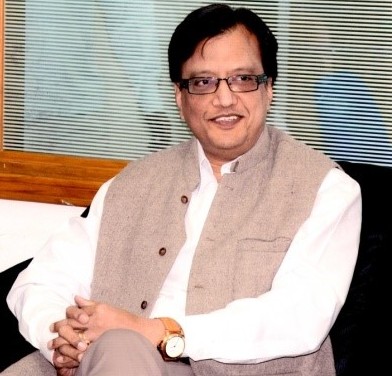Skills & Employment in India in 2020.
Where are we & where we need to go!
Only a Highly Skilled Nation can Prosper.
Vocational Training & Skills are the KEYS to Growth & Employment.
The 1st Observation. Progressive Countries spend up to 3% of GDP on Skills and Vocational Training of the Youth. In India, it is probably less than 0.25%.
The 2nd Observation. In fast-developing countries, nearly 80% of the youth opt for Skills and Vocational Training after the age of 14. Balance 20% opt for University Education.
The 3rd Observation. In India, 100% of the Youth want degrees and Government Jobs. In India, everybody is trying for Government Jobs. They need to know the facts.
The 4th Observation. In most government organizations there is already full employment. Only 4% of the Indian workforce works with the Central and State Governments.3% work in the Organized Private Sector, 50% work in Agriculture, and 43% work in the Manufacturing and Service MSME(so-called ‘Unorganized sector). Nearly 68% of the total workforce is self-employed.
The 5th Observation. China has 500,000 Skill Centres, Japan has 150,000 Skill Centres, Germany has 100,000 Skill Centres BUT India has only 16,000 Skill Centres (ITI’s & ITC’s) but on the other hand, India has 60,000 Colleges.
The 6th Observation. The Private Sector Education Mafia loves the License RAJ in H&TE education because of these controls there is a huge payment for admission in terms of Capitation Fees. But these Institutions are turning out unemployable youth!
The 7th Observation. Nearly 80% of the so-called graduates are from the Arts and Commerce streams. In the present day, international business environments these graduates have a mismatch problem; they demand jobs but do not have adequate skills for the jobs of today and tomorrow.
The 8th Observation. In South Korea, nearly 96% of the work force is properly skilled. In the EU, Japan, and the USA nearly 60% to 80% of the workforce is properly skilled. In China, nearly 60% of the work force is adequately skilled. In India the skilled workforce is hardly 5%, leading to poor productivity, low quality, and high cost in manufacturing and services. Leading to the poor export capability of the Nation.
The 9th Observation. Even land-locked countries like Switzerland & Austria have a total of 12,000 Skill & Vocational Training Centres. Their total population of 160 lacs is the same as Jammu & Kashmir which has less than 50 Skill Centres. But the GDP of Austria + Switzerland is nearly 35% of the GDP of India!
The 10th Observation. The placement of apprentices in the manufacturing and service sectors is not possible in India. Nearly 90% of the apprentices will need to be placed with MSMEs as they employ nearly 85% of the work force in manufacturing and services. In the last 73 years, we have not mapped and classified all the businesses of the 20 Cr MSMEs as they have been done in the 37 countries of Europe and other countries.
The 11th Observation. The Ministry of Corporate ONLY regulates and classifies Public Ltd, Pvt. Ltd & LLPs in India. MCA companies hardly constitute 0.5% of all businesses. 99.5% of businesses in India, like the rest of the world, are MSMEs. MSMEs are mostly Proprietary and Partnership businesses in India. MSME data is NOT on any NATIONAL DATABASE to date. This needs to change ASAP.
The 12th Observation. Therefore presently in India, there is NO connection between Training and Employment. Please note from the 10th Observation that the businesses know about the present and future needs of the business since the apprentices are training with them for a period of 2 to 3 years. They keep on informing the State and Central governments about skills & future job requirements. All planning is done bottom-up.
Suggestion No. 1
Advocacy and Mind-Set change required by Civil Society, Teachers, Parents, and the Youth of India. College Education is NOT the ANSWER. The KEY is Skill Development.
Suggestion No. 2
Map and Classify all MSME’s and other manufacturing and services businesses in each District and ensure that they hire and pay(min. wages or less) to apprentices and offer them practical training for a period of 2 to 3 years. Based on the types of businesses in the local area, the local schools and colleges will set up Vocational Education Centres for theory in areas where training is being given.
Suggestion No. 3
Need to convert in all Colleges and all Secondary Schools of the Nation to have at least 1 or 2 Skill Centres in the area of Manufacturing and Services. These Centres will impart only theory and the practical training will be done in the businesses as mentioned under Suggestion No. 2 above. This way we could increase the number of Skill Learning Centres to nearly 300,000 from the present 16,000.
Suggestion No. 4
The local State governments will have to integrate suggestions as stated under 1, 2 & 3. In the 37 countries of the European Commission, the National Chambers of Commerce do all the co-ordination between Schools-Colleges-MSMEs-Businesses-Govt.
954 total views, 2 views today



This article is very informative and has a practical approach to the present scenario. We all are responsible for creating a beautiful society. Mr.Khanna has thrown light on different aspects of skill development which can do wonders for our nation.